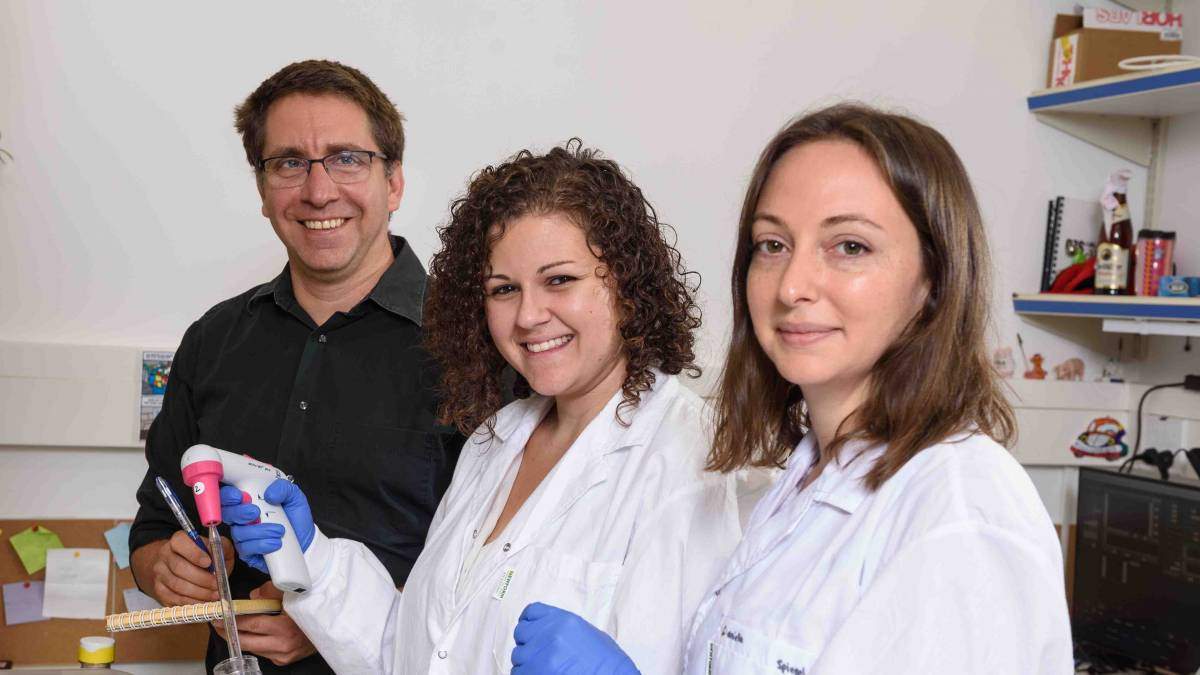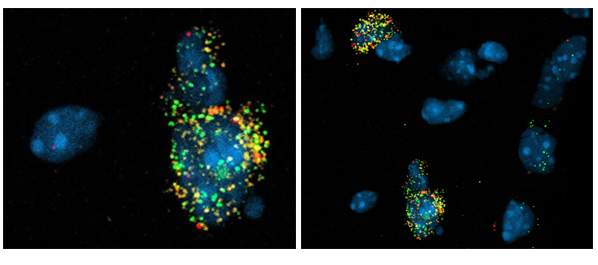Are you a journalist? Please sign up here for our press releases
Subscribe to our monthly newsletter:

Calm or irate, alert or distracted, wide awake or asleep in bed: Each state causes us to learn and remember differently. The information from external sensory perceptions and our internal states are conveyed through separate neural pathways; yet together they determine how our brain processes and stores information. New research at the Weizmann Institute of Science has uncovered a cellular mechanism that integrates these two streams in the uppermost layer of the outermost part of the brain – layer 1 of the cortex. This mechanism appears to play a pivotal role in controlling the plasticity the brain needs in order to learn.
Dr. Ivo Spiegel’s laboratory of the Weizmann Institute of Science’s Neurobiology Department studies “adult education” – that is, how various types of neurons in the cortex regulate the plasticity of cortical circuits in the adult brain. Although researchers had previously assumed the external/internal integration that affects learning and plasticity takes place in the cortex, they have had few clues as to how this happens. One way to approach the issue, says Spiegel, is to identify the various players and then figure out how they all work together. “It is a bit like trying to reverse-engineer a very complex watch,” he says.
In a new study recently published in Neuron, Spiegel, his research group and colleagues focused on particular nerve cells in layer 1 of the cortex. Researchers divide neurons in the cortex into two broad types – excitatory and inhibitory. While most nerve cells in the cortex are excitatory, the research team wanted to investigate the idea that the inhibitory neurons there are essential to the integration process. But in order to investigate how these neurons function in animal models, they first needed to find genes expressed in these cells alone, so that they then could be manipulated selectively with genetic engineering techniques in the lab.
Spiegel, together with his research students Daniella Apelblat and Dahlia Kushinsky, and with the research group of Dr. Johannes Letzkus at the Max Planck Institute for Brain Research in Frankfurt, Germany, identified such a gene, called Ndnf. Their findings showed that Ndnf expression in the layer-1 inhibitory neurons is unique among the inhibitory neuron subtypes. Next, Spiegel and his colleagues created mice in which they manipulated the Ndnf gene so that the Ndnf-expressing neurons could be controlled and their activities tracked. Using these mice, the team then tested whether NDNF neurons in layer 1 of the auditory cortex play a role in a standard learning experiment in which the mice associate a tone with a mild foot shock.

Of course, all neurons work through their connections to other neurons, and the NDNF neurons are no different. The researchers traced their closest connections, finding that they link to excitatory neurons lower down in the cortex through branched extensions called dendrites that reach into layer 1. By analyzing the connections, the team found that another type of inhibitory cell, the Martinotti cells, were acting on the NDNF neurons. Further investigation showed that the two were mutually exclusive – when one was “on” the other was “off,” and vice versa. This pathway had not been seen before. Spiegel: “We found this connection particularly interesting, since Martinotti cells are thought to modulate the dendrites of excitatory neurons during learning.”
Proper inhibition might be key to our ability to learn and experience new things
Next, the team asked to what extent each of these inhibitory cell types – Martinotti cells and NDNF neurons – is involved in learning: That is, do these cells change their responsiveness to the tone during the learning experiment? Surprisingly, the responses of Martinotti cells did not change, but the responses of NDNF neurons became much stronger. In fact, they found that the better the mouse learned to fear the tone, the more responsive the NDNF neurons were upon hearing it. This suggests that NDNF neurons may play a role in encoding the strength of the learned experience.
Ultimately, the team’s findings suggest that NDNF neurons and Martinotti cells split the job between them: The NDNF neurons preferentially mediate the response to internal stimuli, Martinotti cells respond more to the external. Since these two cell types also seem to be connected via a third type of inhibitory neuron, there appear to be complex feedback mechanisms acting on these cortical inhibitory neurons as learning takes place. Spiegel says that inhibitory neurons are thought to be more flexible than the excitatory ones and thus might contribute much more to plasticity. In other words, proper inhibition might be key to our ability to learn and experience new things.
.

“We are just at the start of unraveling the workings of these circuits, but there has already been quite a bit of interest in the mice that we generated, as they provide a new tool for studying learning, memory and plasticity in the cortex. We are now designing several new experiments that will take this research in new directions,” he says.
Among these is research into the way that plasticity in this part of the brain is reduced as we age. “Signals about our internal state are conveyed by acetylcholine – a neurotransmitter that often declines in the elderly. We think that this substance might play a role in maintaining the plasticity of the cortical neurons, and we intend to explore the possible connection between these signals and Alzheimer’s,” says Spiegel.
Dr. Ivo Spiegel's research is supproted by the Zuckerman STEM Leadership Program; the Dan Andreae Laboratory; the Irwin Green Alzheimer's Research Fund; and the Leff Family. Dr. Spiegel is the incumbent of the Friends of Linda and Richard Price Career Development Chair.